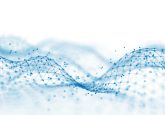Analysis of mass spectrometry data leads researchers to potentially identify new antibiotics compounds
A team of computer scientists have developed a new method identifying new antibiotic compounds from previously unexplored mass spectrometry data. The researchers described their new method, termed DEREPLICATOR, in a recent issue of Nature Chemical Biology.
The rise of antibiotic resistance has posed a serious concern and challenge to scientists and physicians. Through their research, the team are hopeful that their work will potentially help identify new antibiotics in order to effectively treat diseases.
Utilizing mass spectrometry to analyze the chemical structure of compounds, the team ran data obtained from mass spectrometry against a database of known antibiotic chemical structures. In doing this they were able to detect compounds in substances that had previously never been analyzed.
This type of analysis is pioneering in the field of Big Data. Lead author and computer scientist Hosein Mohimani (University of California San Diego) commented “This is the first time that we are using Big Data to look into microbial chemistry and characterize antibiotics and other drug candidates”.
“Although proteomics researchers have been routinely using huge spectral datasets to find important peptides, all traditional proteomics tools fail when it comes to new drug discovery”, he added.
Mohimani and his colleagues developed an algorithm that thoroughly searches mass spectrometry data to find bioactive compounds known as peptidic natural products (PNPs), which include many antibiotics.
The team applied a statistical method known as the Markov Chain Monte Carlo to calculate the probability of rare events and to discard any false positives that may occur, Mohimani remarked: “We got the idea from particle physics”.
The challenge of false positives was overcome by applying statistical analysis to ascertain the significance of individual matches between spectra and the antibiotics database.
PNPs have a broad usage, including a range of other bioactive peptides. Recent breakthroughs in these compounds have raised challenges in developing new algorithm for their analysis, namely due to their complex structures.
Consequently, standard peptide identification methods such as SEQUEST, are unable to identify PNPs.
Scientists were not only able to identify known PNPs by utilizing the DEREPLICATOR method, but were also led to discover new ones. This is promising news in the battle against antibiotic resistance.
Sources: Mohimani H, Gurevich A, Mikheenko A et al. Dereplication of peptidic natural products through database search of mass spectra. Nature Chemical Biology doi:10.1038/nchembio.2219 (2016); http://jacobsschool.ucsd.edu/news/news_releases/release.sfe?id=2071





